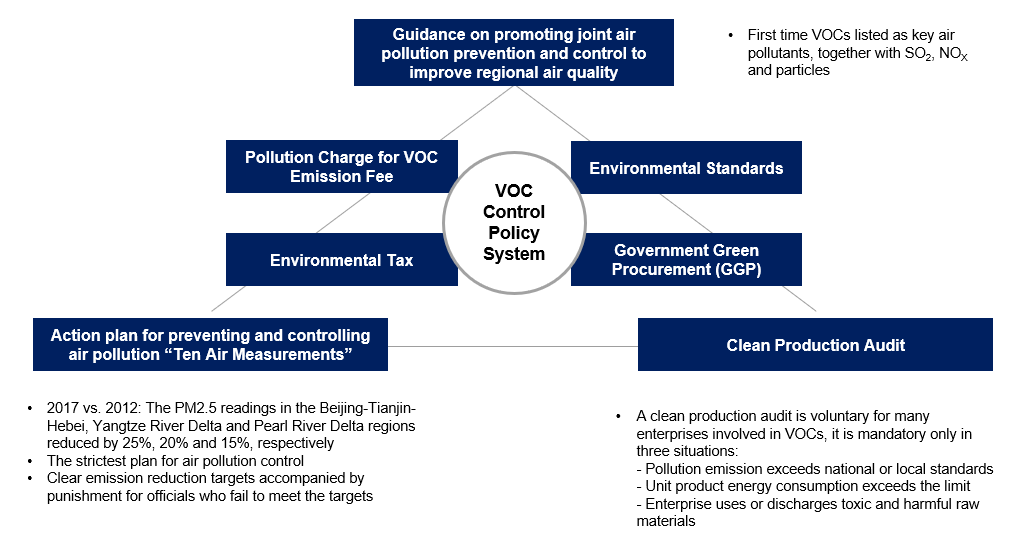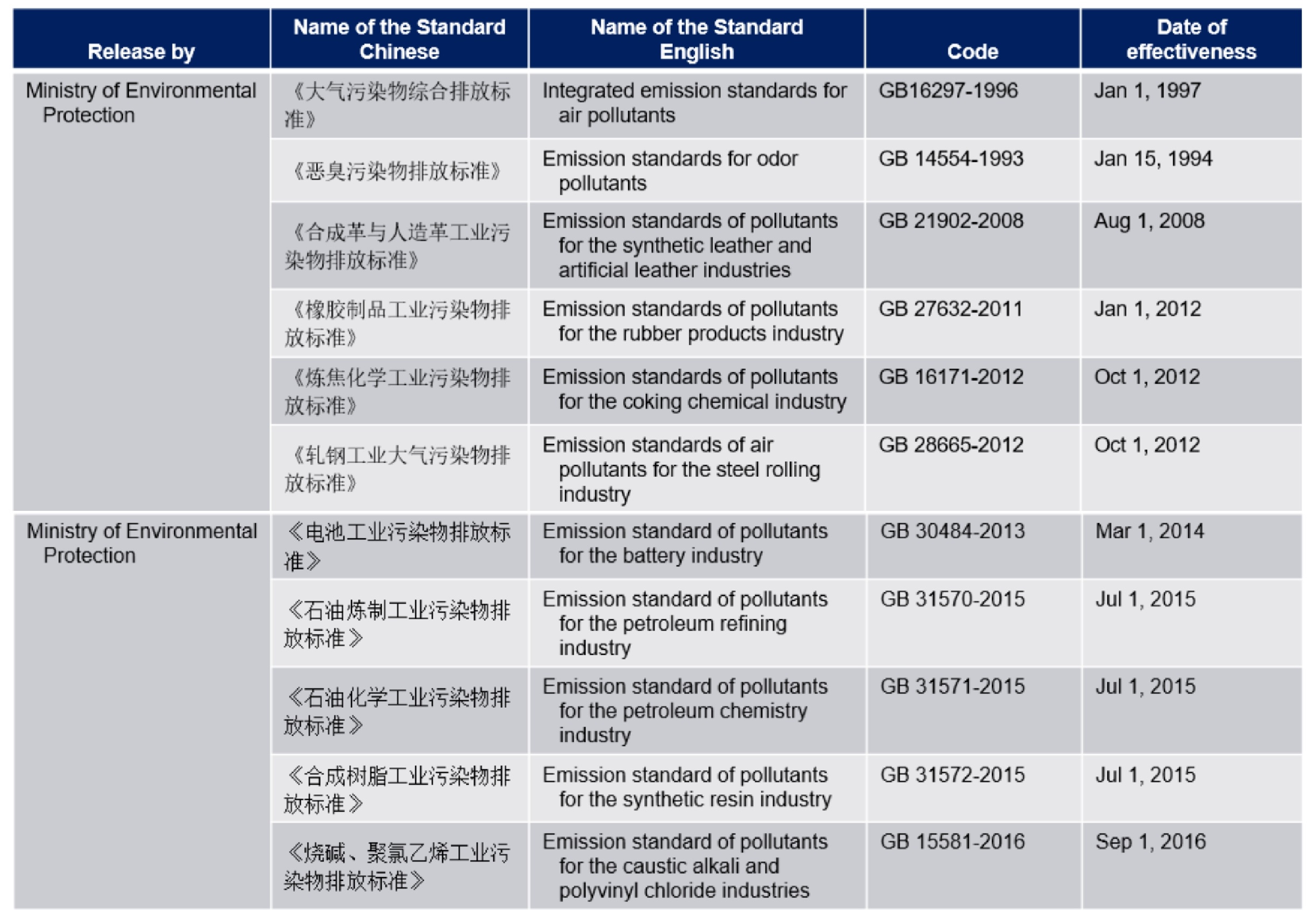CHINA VOC CONTROL MEASURE
- 2015 was a critical year for the implementation of the Air Pollution Prevention and Control Action Plan in China. Significant policy advances were seen in many areas that year, especially in the comprehensive control of volatile organic compounds (VOCs)
- These policies mainly affect the operations of companies in the chemical, packaging, printing, and coatings industries. These VOC control policies are pushing companies to adopt and industrialize new technologies, including high-solid, solvent-less and waterborne technologies at an unprecedented speed
SAI INSIGHT INTO VOC CONTROL POLICIES
- SAI has carried out a comprehensive review of recent VOC regulations and assessed how these policy changes may affect business in the mentioned industries. During this research, it was discovered that although the general trend of VOC control is very clear, there are still a few complications that businesses need to consider when looking at VOC-related policies:
- VOC control policies in China form a comprehensive system. Emission standards alone have three levels: national level, regional level, and sector level. A company’s VOC emissions must comply with the standards of all three levels
- Emission limits vary between regions, and the actual execution and enforcement of these limits also varies. For example, cities such as Beijing execute the VOC emission standards more strictly, this significantly affects the demand there for waterborne coatings, inks, adhesives, etc.
- The general trend is toward waterborne technology, however, the actual change may not be as substantial as some of the downstream players claim it will be. One of the barriers against converting to waterborne technology is the cost of changing the application system. Another common concern of downstream players is that waterborne technology does not perform as well as the traditional solventborne technology
- Take coating as an example, MNC players have the technical advantage of being able to provide efficient waterborne products. Promoted by the recent policies, SAI has observed an increasing number of local Chinese players providing waterborne coatings in their top-tier portfolios
- Other policies, such as the new automotive insurance policy in China, coupled with VOC control standards, will also influence the decisions of downstream customers in terms of MNC vs. local products, and high-end vs. mid-range or low-end products
OVERVIEW OF NATIONAL LEVEL VOC EMISSION STANDARDS
- National pollution emission standards related to VOCs are listed below:
- Limits on emissions in these standards are applied in different phases, the environmental protection bureaus in different areas will also carry out examinations accordingly. So it is important to check recently released standards as well as those released a few years ago
- There are emission control standards targeting different industries and different regions as well. Businesses need to follow all three types of applicable standards. When there is a difference, the most strict standard will apply
VOC EMISSION FEES
- Pilot projects for VOC emission fees in the petrochemical, packaging and printing industries
- In June 2015, the NDRC, MOF and MEP enacted “Pilots for VOC Discharge Fees”. These required the petrochemical, packaging and printing industries to complete pilot projects for VOC emissions fees from October 1, 2015
- In July 2015, Guangzhou took the lead in levying the VOC emission fees. By the end of 2015, the city had collected a total of RMB 1,128,900 from 669 enterprises emitting benzene, methylbenzene and dimethylbenzene. Afterwards, Beijing, Shanghai, Jiangsu province, Anhui province and Hunan province issued their local regulations on VOC emissions fees
- Yunnan province is China’s 17th provincial level region to impose fees on the disposal of VOC pollutants, following Beijing, Shanghai, Jiangsu, Anhui, Hunan, Sichuan, Tianjin, Liaoning, Zhejiang, Hebei, Shandong, Shanxi, Hainan, Hubei, Fujian and Jiangxi








